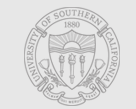The Image of the Sport Journalist in Novels
Alan Tomlinson
Abstract
In exploring the image of the sport journalist or sportswriter in novels there is a surprising gap; few cases exist in which the sport journalist is a developed character or protagonist. Sport and the media have developed strong forms of interdependency in their modern, contemporary form yet the figure of the sport journalist or writer remains largely undeveloped in the representation of sport cultures in novels over a period of over half a century.
Three novels that do include well-developed characterisations of the sport journalist/writer are Bernard Malamud’s "The Natural" (1952), with a strong focus on baseball in the US; Richard Ford’s "The Sportswriter" (1986), revolving around US sports including American Football; and Will Buckley’s "The Man Who Hated Football" (2004), focusing upon reportage of men’s soccer in England. Malamud’s novel features investigative writer Max Mercy; Ford’s central character is feature-writer Frank Bascombe; Buckley’s protagonist is soccer expert Jimmy Stirling. All three of these sportswriters are white and male, and report on essentially male sports. They operate in differing contexts of time and space, yet the representation of the three figures shares some common characteristics: the place of masculinity and patriarchy in sport cultures and business; and the sheer mundanity of reportage in the sport journalist’s life.
The fictional fates and futures in the career trajectories of the sportswriters represented in the three novels evoke the slog of the job, the dubious ethics of the trade, and the dysfunctional relationships of family and community experienced by all of them. Their careers show the dark side of the apparently glamorous and exciting profession of the sport journalist.
To access the complete article, please go to the following:
https://assets.uscannenberg.org/journals/ijpc/IJPC-6-Tomlinson-Novels.pdf
Three novels that do include well-developed characterisations of the sport journalist/writer are Bernard Malamud’s "The Natural" (1952), with a strong focus on baseball in the US; Richard Ford’s "The Sportswriter" (1986), revolving around US sports including American Football; and Will Buckley’s "The Man Who Hated Football" (2004), focusing upon reportage of men’s soccer in England. Malamud’s novel features investigative writer Max Mercy; Ford’s central character is feature-writer Frank Bascombe; Buckley’s protagonist is soccer expert Jimmy Stirling. All three of these sportswriters are white and male, and report on essentially male sports. They operate in differing contexts of time and space, yet the representation of the three figures shares some common characteristics: the place of masculinity and patriarchy in sport cultures and business; and the sheer mundanity of reportage in the sport journalist’s life.
The fictional fates and futures in the career trajectories of the sportswriters represented in the three novels evoke the slog of the job, the dubious ethics of the trade, and the dysfunctional relationships of family and community experienced by all of them. Their careers show the dark side of the apparently glamorous and exciting profession of the sport journalist.
To access the complete article, please go to the following:
https://assets.uscannenberg.org/journals/ijpc/IJPC-6-Tomlinson-Novels.pdf

